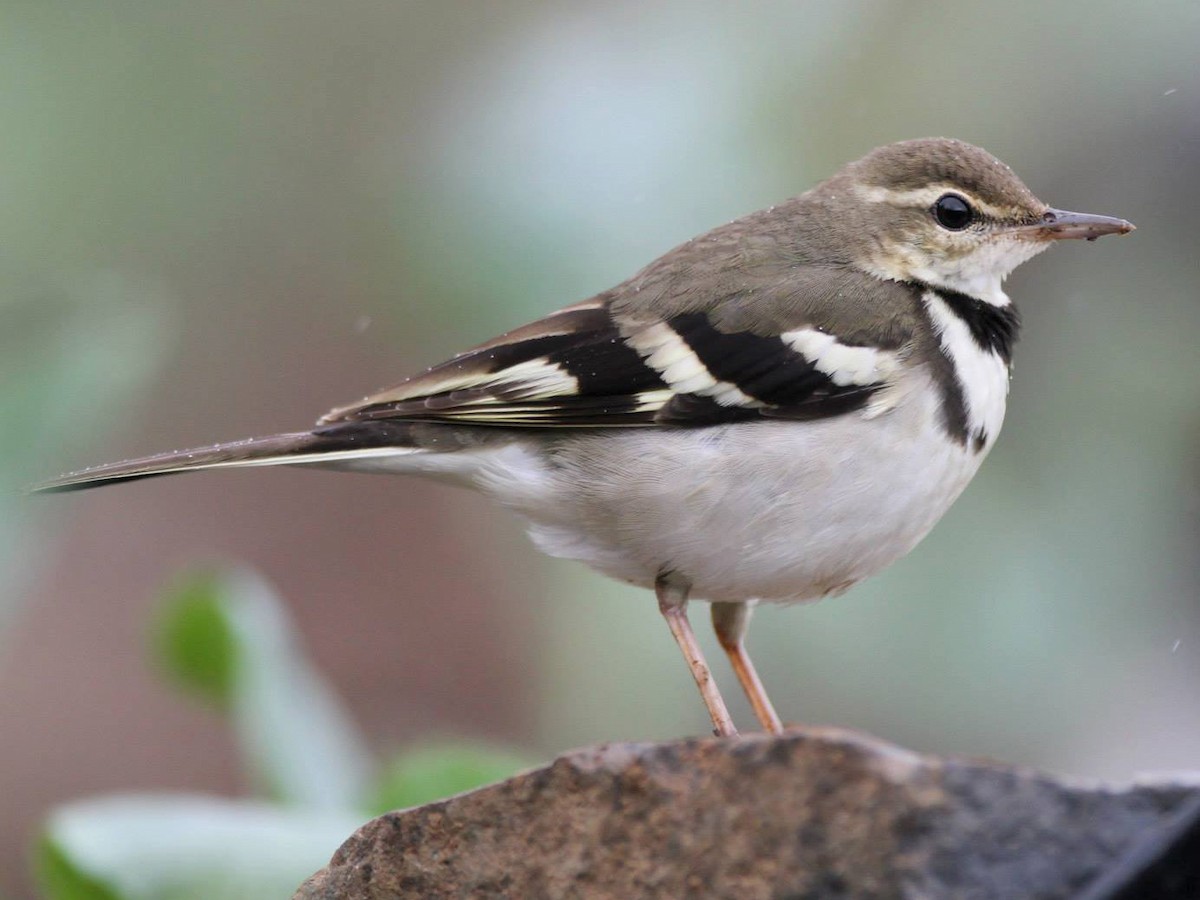
Forest Wagtail
Dendronanthus indicus
Order:
Family:
Size:
Weight:
Taxonomy:
Short Description:
The forest wagtail (Dendronanthus indicus) is a medium-sized passerine bird in the wagtail family Motacillidae. It has a distinctive plumage that sets it apart from other wagtails and has the habit of wagging its tail sideways unlike the usual up and down movements of the other wagtail species. It is the only wagtail species that nests in trees. They are found mainly in forested habitats, breeding in the temperate parts of east Asia and wintering across tropical Asia from India to Indonesia.This is a distinctive wagtail, the only one placed in the genus Dendronanthus (all other wagtails are placed in Motacilla). The forest wagtail is 18 cm in length, a slender bird with a long tail. The back and crown are olive brown, and the wings are black with two yellow wing bars and white tertial edges. There is a white supercilium, above a dark stripe through the eye. The underparts are white, apart from a black double breast band. The upper breast band is bib-like while the lower band is often broken. Sexes are similar. Young birds are more yellowish on the underside. As its English and scientific names imply, this is a forest species, a distinction from all other wagtails. It is usually found in open areas of the woodland such as clearings. In winter it is found mainly in well-shaded forest habitats or along paths in coffee plantations and clearings in forests. The breeding areas are in eastern Asia, parts of Korea, parts of China (Kansu, Anhwei, Hunan) and parts of Siberia. Southern records of breeding from Assam have been questioned. It migrates to the warmer parts of Asia in winter and it has been suggested that they reach southern India and Sri Lanka via the Andaman Islands. It has been recorded as a vagrant in the Maldives. It was formerly thought to winter only in southwestern India, passing through the rest of the peninsula on migration. But now it has been shown to winter in all of the southern part of the peninsula in addition to southwestern India. In Pakistan, considered as migrant winter straggler to indus river forests in extreme southern Sind. Normally inhabits tropical evergreen rainforest.
Far far away, behind the word mountains, far from the countries Vokalia and Consonantia, there live the blind texts. Separated they live in Bookmarksgrove right at the coast
Dadu,Hyderabad,Thatta
Far far away, behind the word mountains, far from the countries Vokalia and Consonantia, there live the blind texts. Separated they live in Bookmarksgrove right at the coast
About Photographer : Hello World
Facebook
Twitter
Instagram
Flicker
LinkedIn

